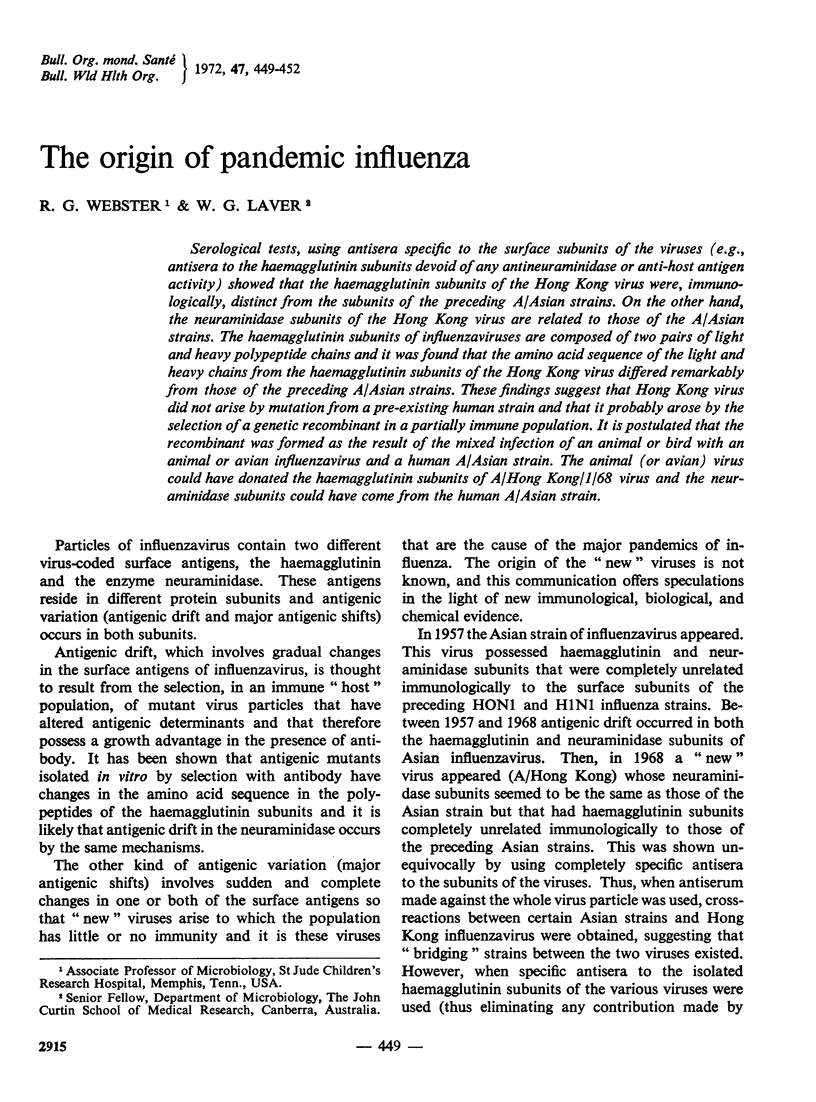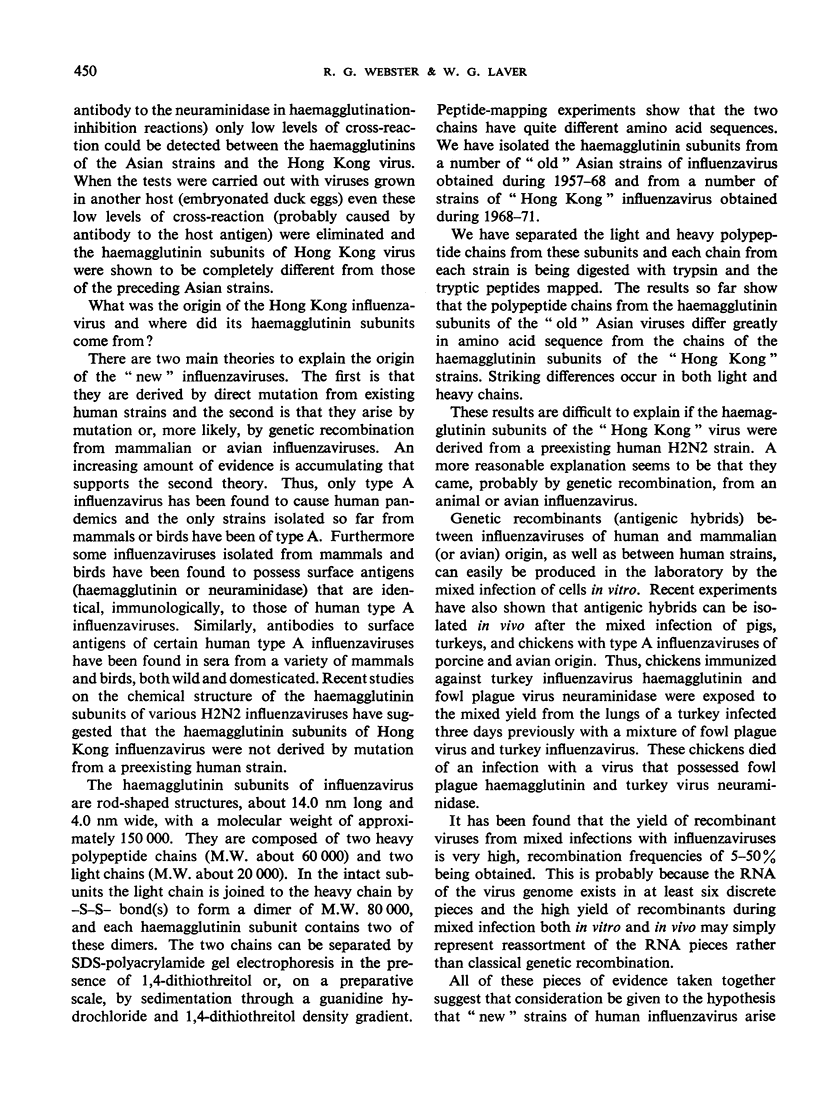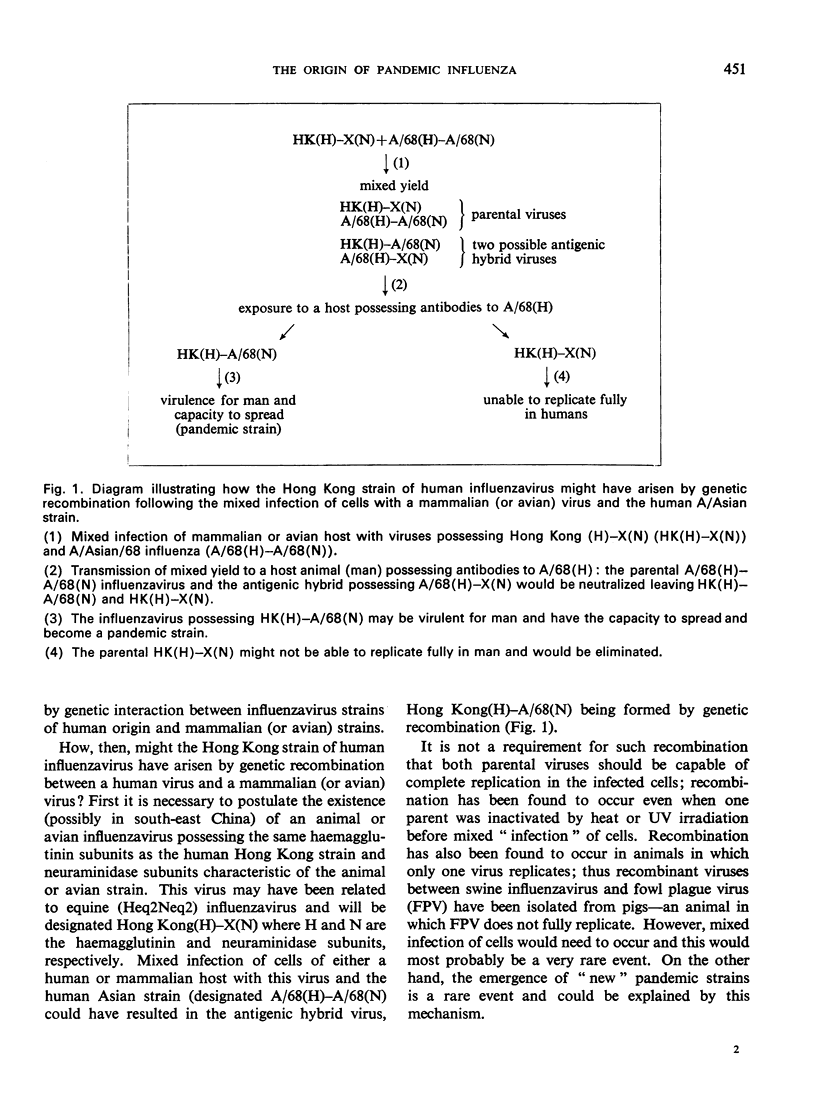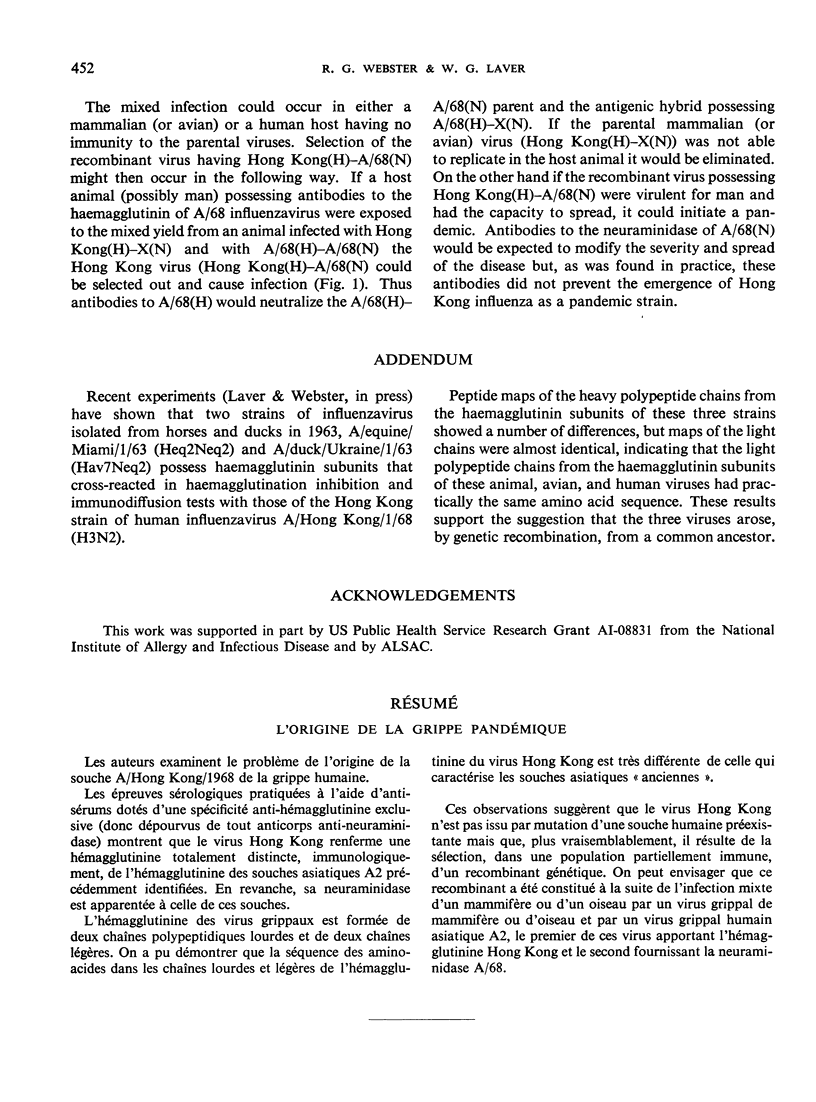Abstract
Serological tests, using antisera specific to the surface subunits of the viruses (e.g., antisera to the haemagglutinin subunits devoid of any antineuraminidase or anti-host antigen activity) showed that the haemagglutinin subunits of the Hong Kong virus were, immunologically, distinct from the subunits of the preceding A/Asian strains. On the other hand, the neuraminidase subunits of the Hong Kong virus are related to those of the A/Asian strains. The haemagglutinin subunits of influenzaviruses are composed of two pairs of light and heavy polypeptide chains and it was found that the amino acid sequence of the light and heavy chains from the haemagglutinin subunits of the Hong Kong virus differed remarkably from those of the preceding A/Asian strains. These findings suggest that Hong Kong virus did not arise by mutation from a pre-existing human strain and that it probably arose by the selection of a genetic recombinant in a partially immune population. It is postulated that the recombinant was formed as the result of the mixed infection of an animal or bird with an animal or avian influenzavirus and a human A/Asian strain. The animal (or avian) virus could have donated the haemagglutinin subunits of A/Hong Kong/1/68 virus and the neuraminidase subunits could have come from the human A/Asian strain.
Full text
PDF





